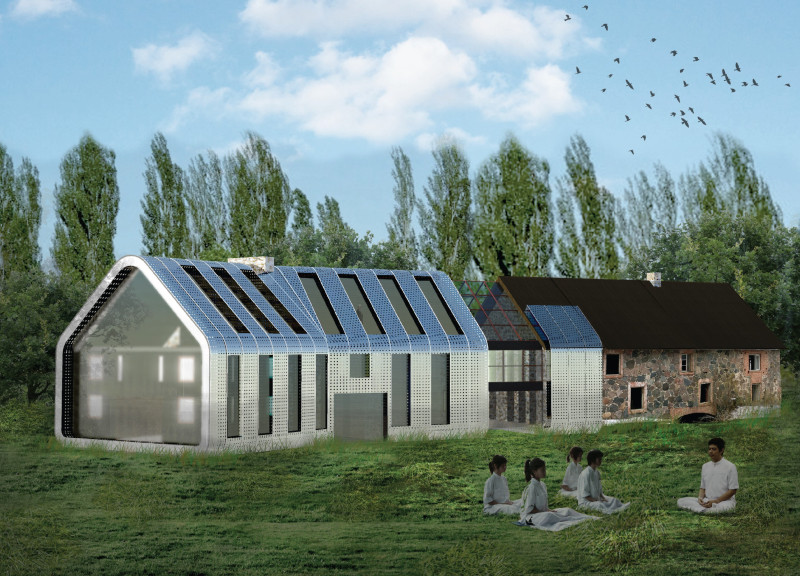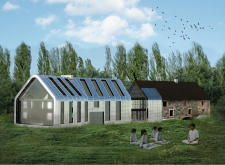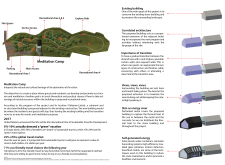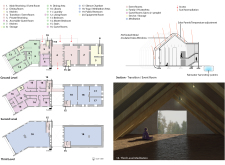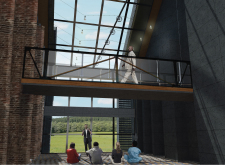5 key facts about this project
### Overview
Located in Vidzeme, Latvia, the Meditation Camp is designed to serve as an eco-tourism and meditation facility that respects the local landscape and cultural heritage. The project focuses on integrating existing structures and employing innovative construction techniques to create an environment conducive to meditation and eco-friendly practices. By anticipating contemporary trends in sustainable tourism, the facility aims to educate guests about sustainable resource use while providing a serene retreat for relaxation and introspection.
### Site Integration and Landscape Harmony
The camp is situated within a dense natural setting, characterized by abundant trees and expansive views. The design preserves an existing stone structure, which is complemented by a contemporary extension that incorporates modern amenities without detracting from the historical context of the original building. The arrangement of spaces enhances natural light intake and ensures visual connections with the surrounding landscape, promoting a seamless relationship between indoor and outdoor environments.
### Architectural Features and User Experience
The architectural elements combine traditional and contemporary design principles, evident in the smooth lines and expansive roof that provide panoramic vistas. Key materials include perforated metal panels for thermal insulation, insulated glass windows for maximizing natural light efficiency, and wood accents that enhance interior warmth. The building layout includes event rooms, guest accommodations for 21 individuals, and dedicated meditation areas, fostering opportunities for group interaction while maintaining areas for solitude. An operable glass-walled transition space between the old and new structures facilitates engagement, allowing users to appreciate both architectural styles and promoting communal activities in a tranquil setting.
The incorporation of solar panels and a rainwater harvesting system emphasizes sustainability, reducing reliance on external resources and aligning with eco-friendly practices. The overall design reflects a commitment to efficient energy use, community engagement, and architectural coherence, affirming the camp's role as a model for future eco-tourism developments.


